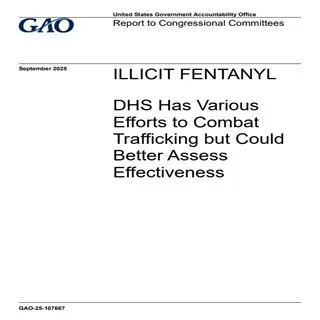By The American Immigration Council
This fact sheet explains: • Where fentanyl is smuggled into the United States? • Who is smuggling fentanyl into the United States?
Over the last decade, a surge in the availability and use of synthetic opioids has led to a staggering toll of overdoses in the United States. From 2013 to 2023, the national drug overdose death rate more than doubled, with drug overdose deaths peaking in 2022 at 107,941. 1 Much of this was due to the rise in fentanyl, a powerful synthetic opioid commonly used for pain management in hospital settings, which was also responsible for 70 percent of overdose deaths in 2023. 2 While overdose deaths have fallen from their record highs,3 the threat posed by synthetic opioids remains — as does the importance of properly understanding how fentanyl enters the United States. Background This fact sheet uses two separate datasets to confirm what has long been reported by law enforcement sources and other researchers: that the majority of fentanyl smuggled across the southern border enters not on the backs of migrants crossing the border on foot, but in the vehicles and on the bodies of U.S. citizens and other lawful entrants seeking admission at land ports of entry.4 Using two separate datasets described below, we confirm roughly four in five people apprehended for smuggling fentanyl into the United States at the southern border between October 2018 and June 2024 were U.S. citizens — the rest were largely individuals with visas, border crossing cards, or other permission to enter the United States lawfully at a port of entry. Despite this reality, many Americans falsely believe that migrants are the ones bringing fentanyl into the country.5 This narrative has been fueled by political rhetoric that seeks to link the issue of migration at the southern border directly with the opioid epidemic.6 However, this data shows conclusively that the two issues are distinct. Migrants are not responsible for the fentanyl epidemic. Rather, there is bipartisan agreement that efforts to reduce the volume of fentanyl smuggled across the southern border should focus primarily on ports of entry,7 where millions of people enter every month. Longstanding weaknesses in port security permit transnational criminal organizations to hide small volumes of the powerful synthetic opioid among other lawful trade and traffic and remain the border’s biggest vulnerability to fentanyl smuggling



